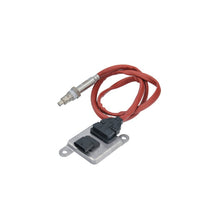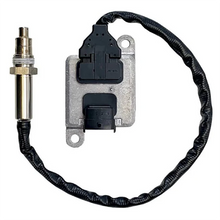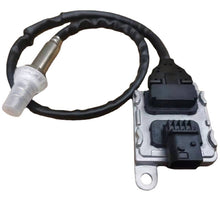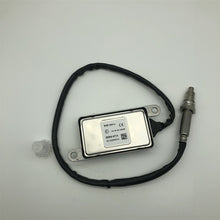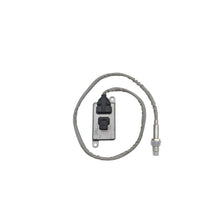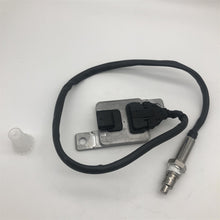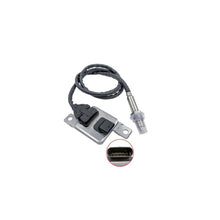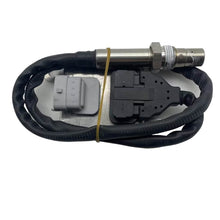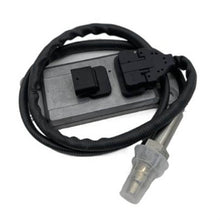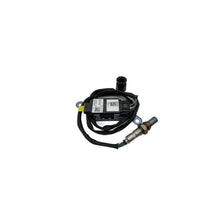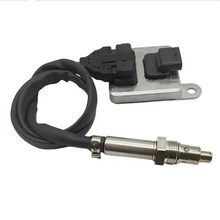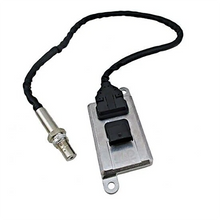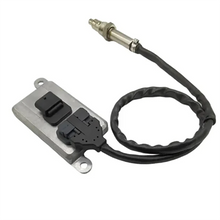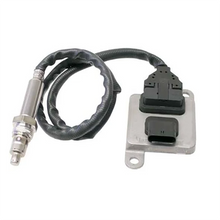Nox sensor
Nitrogen oxide sensor
The term NOx represents several forms of nitrogen oxides such as NO (nitric oxide), NO2 (nitrogen dioxide) and N2O (nitrous oxide, also known as laughing gas). In a gasoline engine, NO is the most common form of NOx at around 93%, while NO2 is around 5% and the rest is N2O. There are other forms of NOx such as N2O4 (the dimer of NO2), which only exists at lower temperatures, and N2O5, for example.
Meanwhile, for diesel engines, the emissions situation is different. Owing to their much higher combustion temperatures (resulting from their high cylinder compression ratios as well as turbocharging or supercharging), diesel engines produce much higher engine-out NOx emissions than spark-ignition gasoline engines. The recent availability of Selective catalytic reduction (SCR) allows properly equipped diesel engines to emit similar values of NOx at the tailpipe compared to a typical gasoline engine with a 3-way catalyst. The SCR changes the harmful nitrogen oxides by adding the solution AdBlue which reduces environmental pollution and protects the exhaust system.[1] In addition, the diesel oxidation catalyst significantly increases the fraction of NO2 in "NOx" by oxidizing over 50% of NO using the excess oxygen in the diesel exhaust gases.
The drive to develop a NOx sensor arises from environmental factors. NOx gases can cause various problems such as smog and acid rain. Many governments around the world have passed laws to limit their emissions (along with other combustion gases such as SOx (oxides of sulfur), CO (carbon monoxide) and CO2 (carbon dioxide) and hydrocarbons). Companies have realized that one way of minimizing NOx emissions is to first detect them and then to employ some sort of feedback loop in the combustion process, thereby enabling the minimization of NOx production by, for example, combustion optimization or regeneration of NOx traps. Therefore, in many applications with exhaust-gas treatment systems, one NOx sensor is used upstream of the exhaust-gas treatment system (upstream) and a second sensor is used downstream of the exhaust-gas treatment system. The upstream sensor is used for the aforementioned feedback loop. Meanwhile, the downstream sensor is used mainly to confirm that the legislated emissions limits have not been exceeded.
High sensitivity and durability required
The levels of NO are around 100–2000 ppm (parts per million) and NO2 20–200 ppm in
a range of 1–10% O2. The sensor has to be very sensitive to pick up these levels.
The main challenges in the sensor development are selectivity, sensitivity, stability, reproducibility, response time, limit of detection, and cost. In addition due to the harsh environment of combustion the high gas flow rate can cool the sensor which alters the signal or it can delaminate the electrodes over time and soot particles can degrade the materials.
One of the major challenges faced by such gas sensors is humidity. The relative effect on signal response is highly subjective to the sensor type. Electrochemical sensors are mostly immune from humidity effect as water molecules help regulate the electrolyte concentration but long term exposure to dry gas can reduce the solvent concentration of the electrolyte. High amount of cross sensitivity has been observed in gas sensors due to similarity in electron exchange mechanism between target gases and water molecules.
Diselmart offer intel nox sensor and exhaust nox sensor. The NOx sensor is part of the NOx reduction aftertreatment system used in diesel vehicles with urea based SCR systems. The sensor located upstream of the SCR catalyst directly measures the engine-out NOx gas concentration, which helps determine the optimum amount of urea injection.


